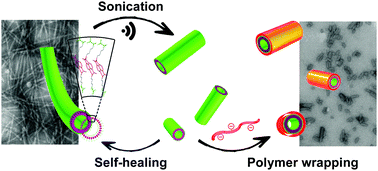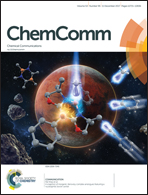Controlling the length of self-assembled nanotubes by sonication followed by polymer wrapping†
Abstract
This work demonstrates that sonication, followed by polymer-wrapping, is an effective strategy to modulate the length of self-assembled nanotubes. The length distributions of the nanotubes were controlled by varying the amplitude of sonication. Wrapping the nanotubes with ionic polymers suspended the propensity of the nanotube fragments to re-assemble over time into their elongated precursors.



 Please wait while we load your content...
Please wait while we load your content...